
Something irresistibly wild about going not higher, but deeper. While cities stretch upward with glass and steel, there’s a whole other world hidden far below our feet—darker, older, quieter. These are places where light vanishes, time slows, and Earth reveals its raw, untouched core.
You won’t find cafes or crowds down there—just silence, stone, and stories carved over millions of years. The air is colder. The paths are narrower. And the depth? Let’s just say some of these caves drop farther than the tallest skyscrapers ever dared to rise. Ready to descend into America’s underground giants? Let’s head down.
1. Lechuguilla Cave – New Mexico
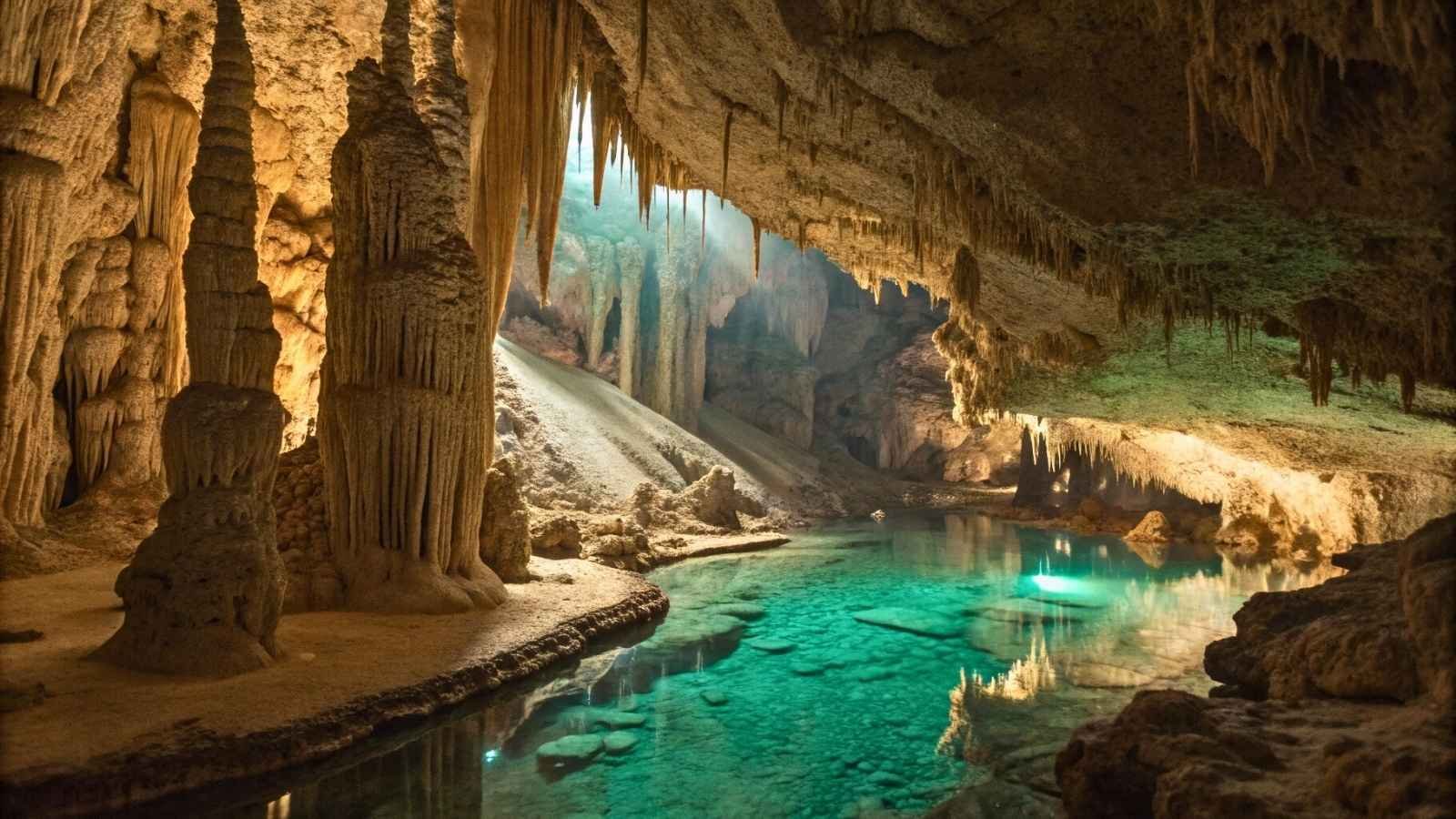
Tucked beneath the rugged ridges of Carlsbad Caverns National Park, Lechuguilla Cave is the kind of place that feels straight out of a sci-fi novel. With a recorded depth of over 1,600 feet, it’s not just deep—it’s the deepest cave in the continental U.S. But depth is only part of its legend. What truly sets Lechuguilla apart is its surreal beauty: dazzling formations of gypsum chandeliers, submarine-like passages, and bizarre bacteria that survive without sunlight.
Discovered by explorers in the 1980s after hearing wind roar from a tiny collapse, this cave has become one of the most scientifically significant cave systems in the world. It’s closed to the public to protect its fragile environment, but researchers are regularly granted access.
Even though you can’t go inside yourself, just standing at the entrance trailhead, with the desert stretching in every direction, is a moment. You feel like you’re standing on top of another world—because you are.
Useful Info:
- Best Time to Visit (Trail Area): October to April (cooler desert temps)
- Access: Not open to the public – entry is limited to permitted scientific expeditions
- Nearby Attraction: Carlsbad Caverns, which is open and awe-inspiring
- Interesting Fact: Hosts rare extremophile microbes being studied for potential medical breakthroughs
2. Jewel Cave – South Dakota
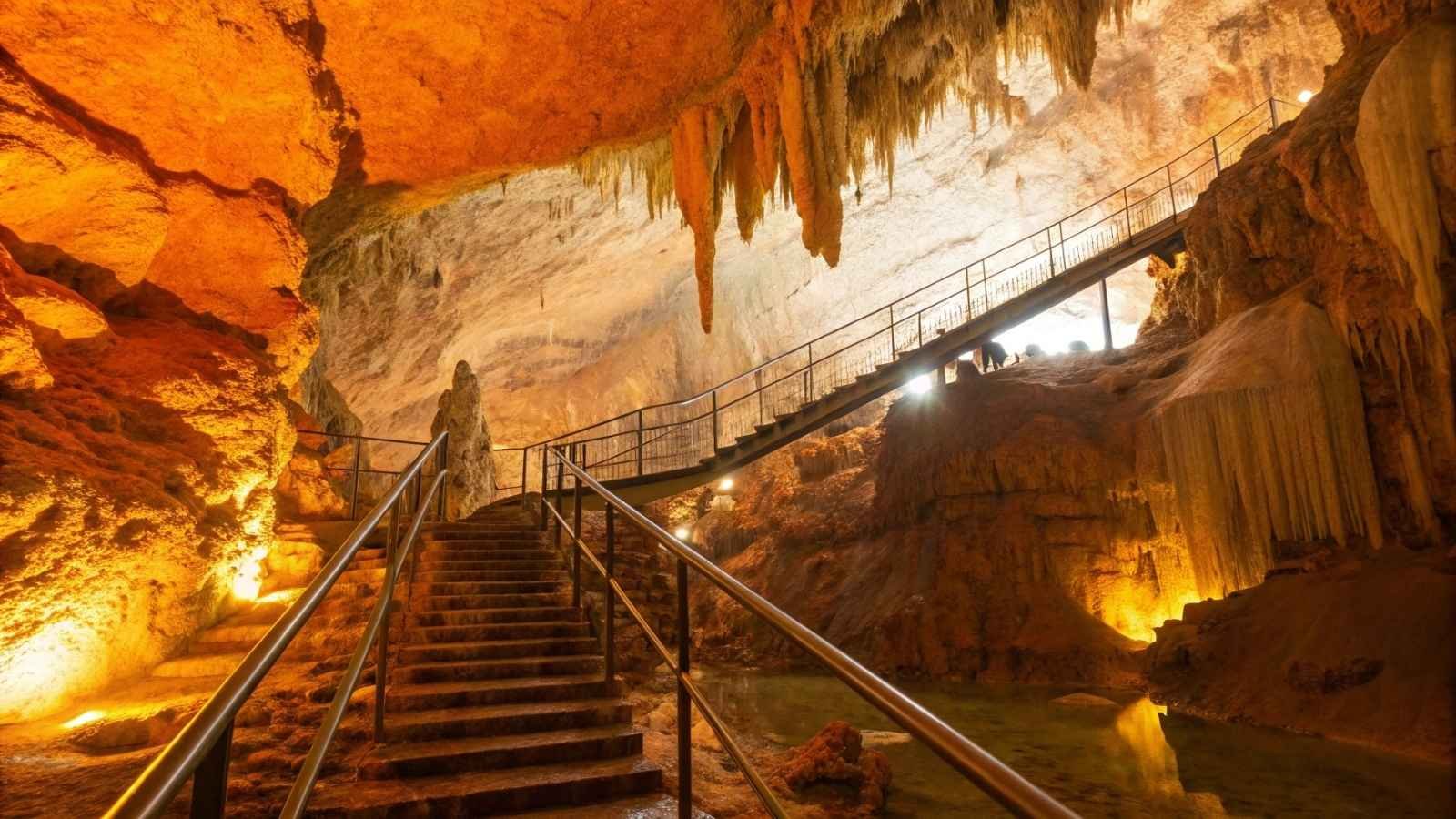
Earth had a hidden jewel box; it would probably be Jewel Cave. Located near Custer, South Dakota, this is the third-longest cave system in the world, and it plunges over 700 feet deep. Inside, it’s a mesmerizing crystal universe of calcite formations, glittering walls, and winding mazes that go on for more than 215 miles (and counting).
Exploring Jewel Cave feels like walking through time. The air is cool, the light dim, and the sense of scale disorienting in the best way. Tours offered by the National Park Service bring you close to formations like “nailhead spar” and “dogtooth spar,” names as weird and wonderful as the cave itself. The cave’s name isn’t marketing—it does shine.
The upper levels are accessible to the public via guided tours, ranging from easy walks to strenuous spelunking. And once you’re out, the surrounding Black Hills offer beautiful hikes and wildlife-spotting. It’s an underground adventure paired with surface-level serenity.
Useful Info:
- Best Time to Visit: May through September (summer tours are most frequent)
- Tour Options: Scenic Tour, Historic Lantern Tour, Wild Caving Tour
- Average Temp Inside: 49°F year-round – bring a jacket!
- Nearby Attractions: Mount Rushmore, Wind Cave, Custer State Park
3. Ellison’s Cave – Georgia
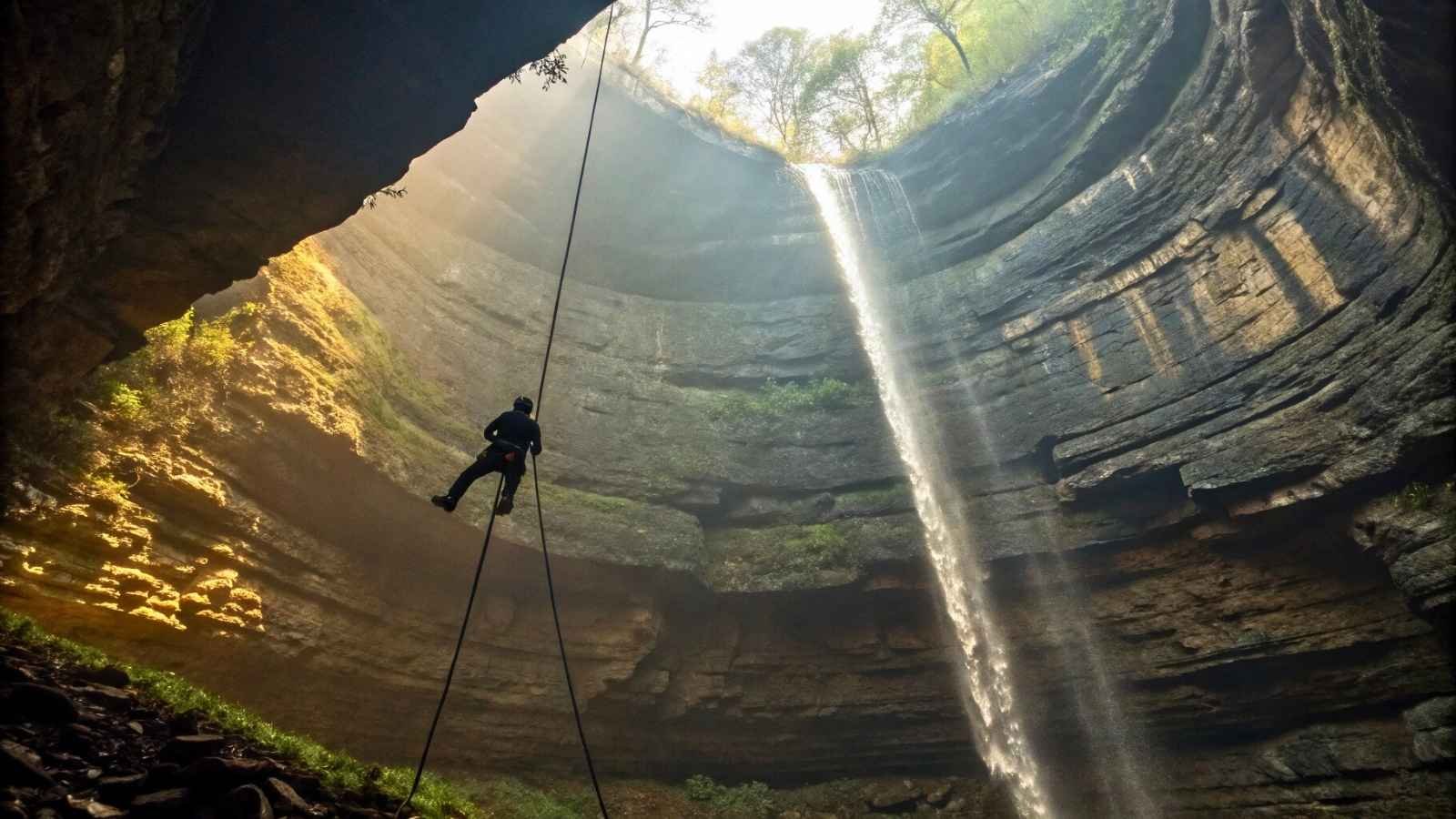
Ellison’s Cave is the kind of place where vertical dreams—and nightmares—come true. With a staggering depth of 1,063 feet, it’s the deepest cave in the eastern U.S. and home to one of the most dramatic vertical drops in North America: Fantastic Pit, a single drop of 586 feet.
Located in the Appalachian Plateau of northwest Georgia, this cave isn’t for beginners. There’s no lighting, no railings, and certainly no gift shop. You rappel, crawl, and rope your way down into a cathedral-like void that few have ever laid eyes on. For seasoned cavers, it’s a rite of passage.
Though it’s rugged and remote, there’s something magnetic about the silence, the raw geology, and the cool, damp air that greets you as you descend. It’s not a place for casual tourism, but it’s legendary in the world of vertical caving.
Useful Info:
- Best Time to Visit: Spring or fall – avoid summer due to heat and winter due to ice
- Access: Permit required; technical experience and gear mandatory
- Not for Beginners: Vertical drops, narrow crawls, and serious hazards
- Nearby Base: Lafayette, GA – closest town for supplies/lodging
4. Fern Cave – Alabama
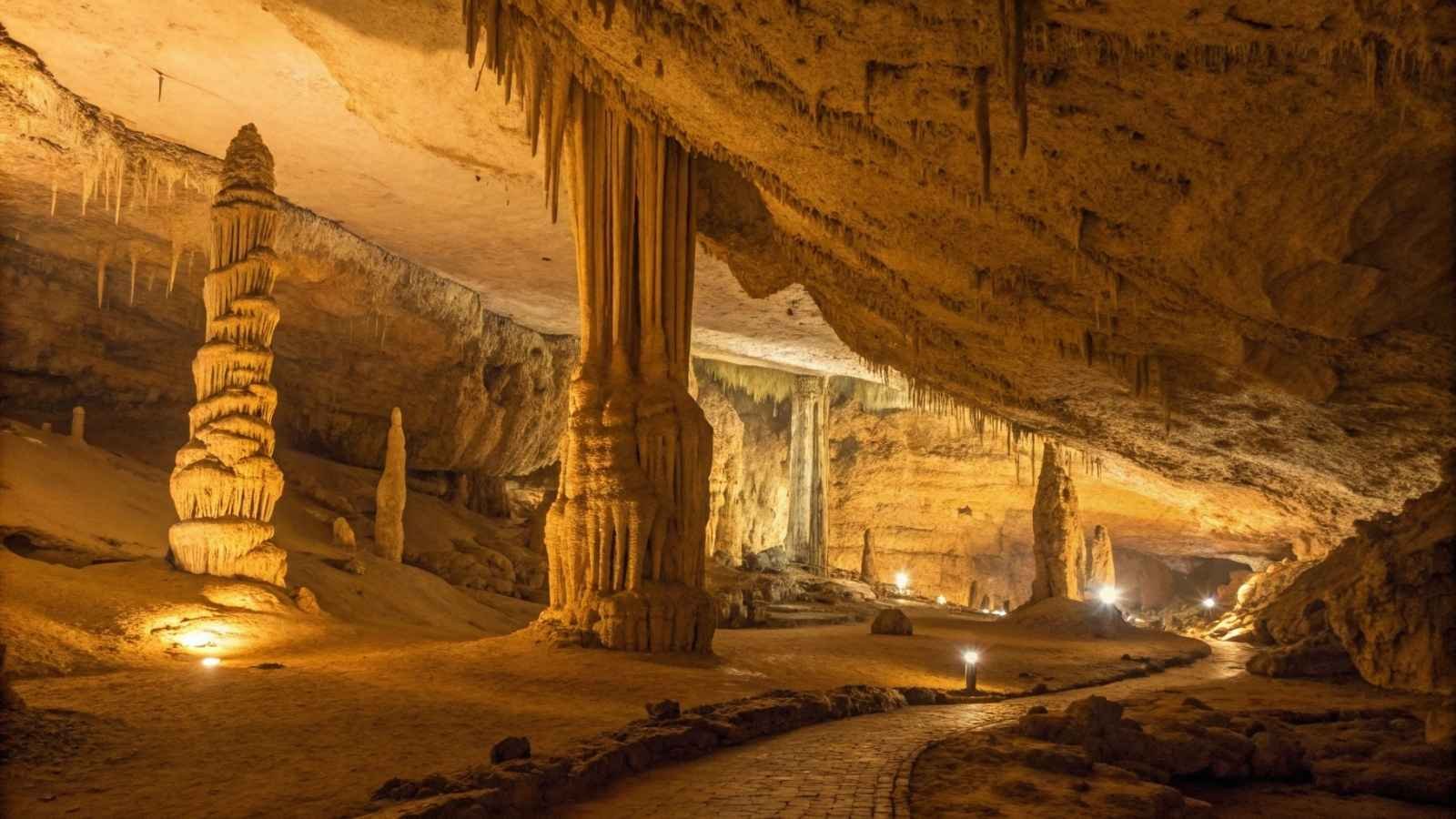
You might not expect one of the country’s deepest caves to sit in the hills of Jackson County, Alabama, but Fern Cave surprises. With a depth of around 450 feet and over 15 miles of mapped passageways, it’s not just deep—it’s incredibly complex. But here’s the twist: it’s also a bat sanctuary.
Fern Cave is home to North America’s largest colony of gray bats, a federally endangered species. Because of this, large portions of the cave are closed to the public, but some sections are open to permitted researchers and qualified cavers.
The entrance is tucked behind lush greenery and—true to its name—ferns and mosses blanket the slopes. In the right season, it feels like you’ve stepped into a hidden world just above an even more mysterious one below.
Useful Info:
- Best Time to Visit: Late fall to early spring (outside bat maternity season)
- Access: Controlled by U.S. Fish and Wildlife Service; permits required
- Protected Area: Key ecological site – minimal impact policy in place
- Nearby Attraction: Russell Cave National Monument
5. Sistema Cheve – Oaxaca Extension

Technically located in southern Mexico, Sistema Cheve is included here because many of its most important explorations have been led by U.S. caving teams over the last 30 years. Why? Because this cave system may turn out to be the deepest cave on Earth—estimates suggest it could exceed 8,000 feet in depth once fully mapped.
Still-unfinished puzzle, made of roaring underground rivers, abyssal pits, and flood-prone tunnels. Expeditions involve weeks of camping underground, tight crawls, vertical descents, and brutal endurance. While not publicly accessible, the stories and footage of U.S. cavers exploring Cheve have become the stuff of legend in the global caving community.
It’s a reminder that Earth still has unexplored frontiers—and sometimes, they’re straight down.
Useful Info:
- Best Time for Expeditions: March to May (before rainy season floods chambers)
- Access: No tourism – only elite caving expeditions with extensive planning
- Location: Sierra Juárez mountains, Oaxaca
- Note: Closely tied to National Geographic and US deep-caving documentaries
6. Fantastic Pit (Lookout Mountain Cave System) – Georgia

The name doesn’t exaggerate—Fantastic Pit is a fantastic place to descend into the Earth. Part of the Pigeon Mountain system in Georgia, this cavernous drop plunges nearly 600 feet straight down, making it one of the deepest vertical cave shafts in the United States.
Accessing it requires ropes, skill, and nerves of steel. You rappel down into an echoing black void where every movement sends sound ricocheting off rock walls like distant thunder. There’s no gentle introduction here—just a vast vertical gash that swallows you into the unknown.
While you won’t find tourists strolling through this pit, experienced cavers travel from around the world just for the thrill of the descent. It’s raw, it’s intense, and it reminds you just how small you are compared to what lies beneath your feet.
Useful Info:
- Best Time to Visit: Spring or early fall – conditions are most stable
- Access: Technical cave – only experienced cavers with proper gear
- Vertical Drop: ~586 feet (rappel required)
- Nearby Town: Lafayette, Georgia – base for many southeastern caving trips
7. Slinky’s Vertical Cave – Nevada
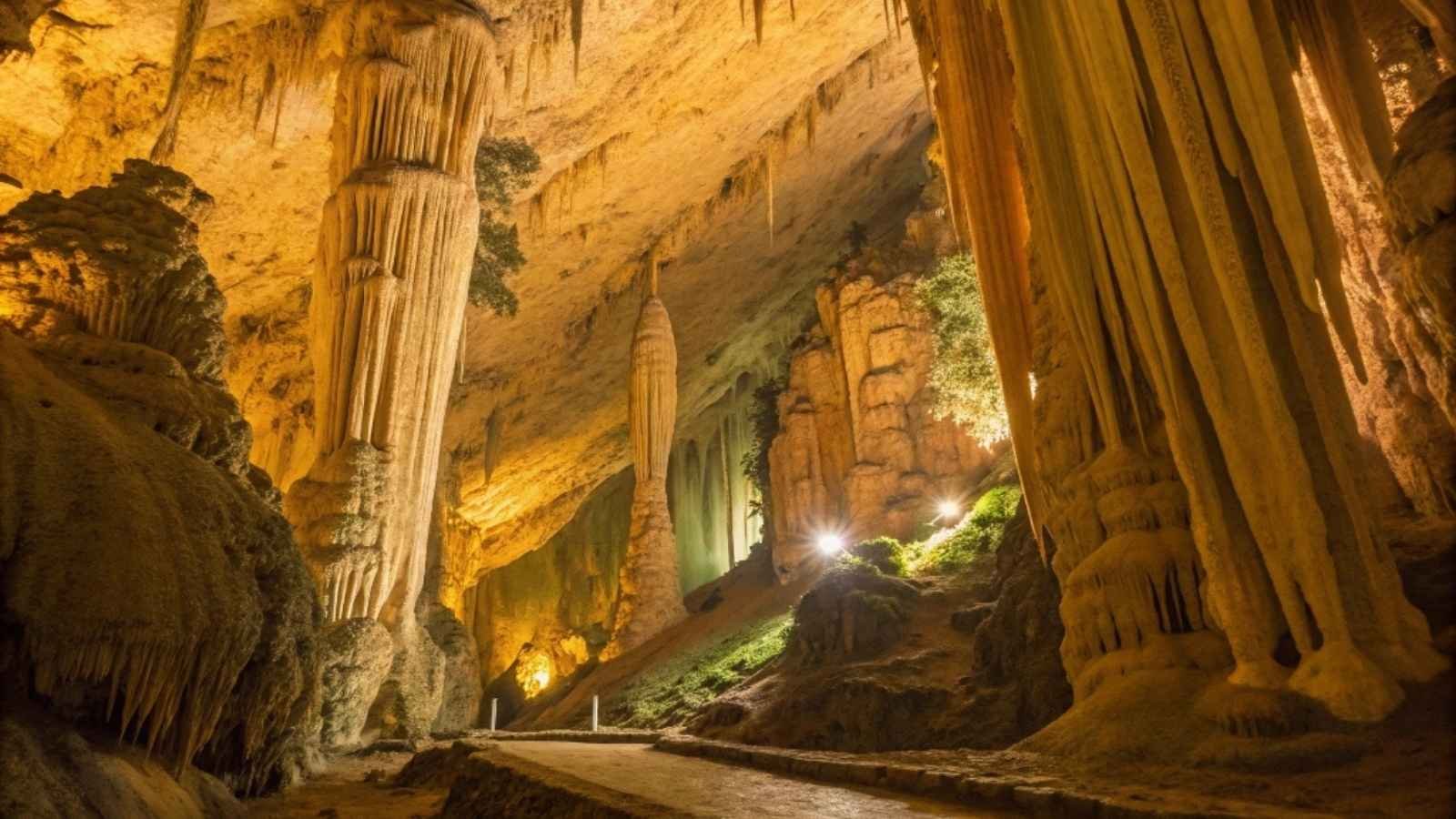
Slinky’s Vertical Cave might sound like a novelty, but it’s one of the least-known but deepest caves in the U.S., with pits dropping more than 500 feet. Located in the Great Basin region of Nevada, this cave is a vertical playground for expert cavers.
It’s called “Slinky’s” for a reason: navigating the spiraling, tight descents feels like falling through the coils of a toy Slinky. Unlike more expansive caves, this one demands a psychological edge—claustrophobia isn’t welcome here. But the reward is an otherworldly silence, where the only sound is your breathing and the occasional drip echoing far below.
It’s not marked on tourist brochures or state park maps. And yet, for those who know of it, it represents a pristine slice of American subterranea—untouched, unlit, and beautifully remote.
Useful Info:
- Best Time to Visit: Fall – avoids summer heat and winter hazards
- Access: Private land or research-permitted teams only
- Experience Required: Extremely technical; narrow and multi-drop verticals
- Pro Tip: Always go with a team—rescue in these conditions is nearly impossible solo
8. Neversink Pit – Alabama

A cave or a cathedral? Neversink Pit, located in northern Alabama, blurs the line. This is one of the most photographed vertical pits in North America—and for good reason. The shaft plunges 162 feet down, but it’s the view from above that captures most hearts: a lush, green-rimmed opening where ferns cling to limestone walls, mist rises, and waterfalls cascade after a rain.
Unlike other technical caves, Neversink offers a taste of the vertical for intermediate cavers and even photographers (with permission). It’s one of those rare spots where natural beauty and raw geology collide dramatically.
Whether you’re descending on rope or standing at the lip during golden hour, Neversink reminds you that some of Earth’s most profound places aren’t up in the clouds, but down in the dark.
Useful Info:
- Best Time to Visit: Late spring to early fall – greenest and most photogenic
- Access: Permit required from Southeastern Cave Conservancy
- Difficulty: Intermediate – vertical gear needed, but not extreme
- Note: No hiking trails inside – vertical descent only
9. Nutty Putty Cave – Utah
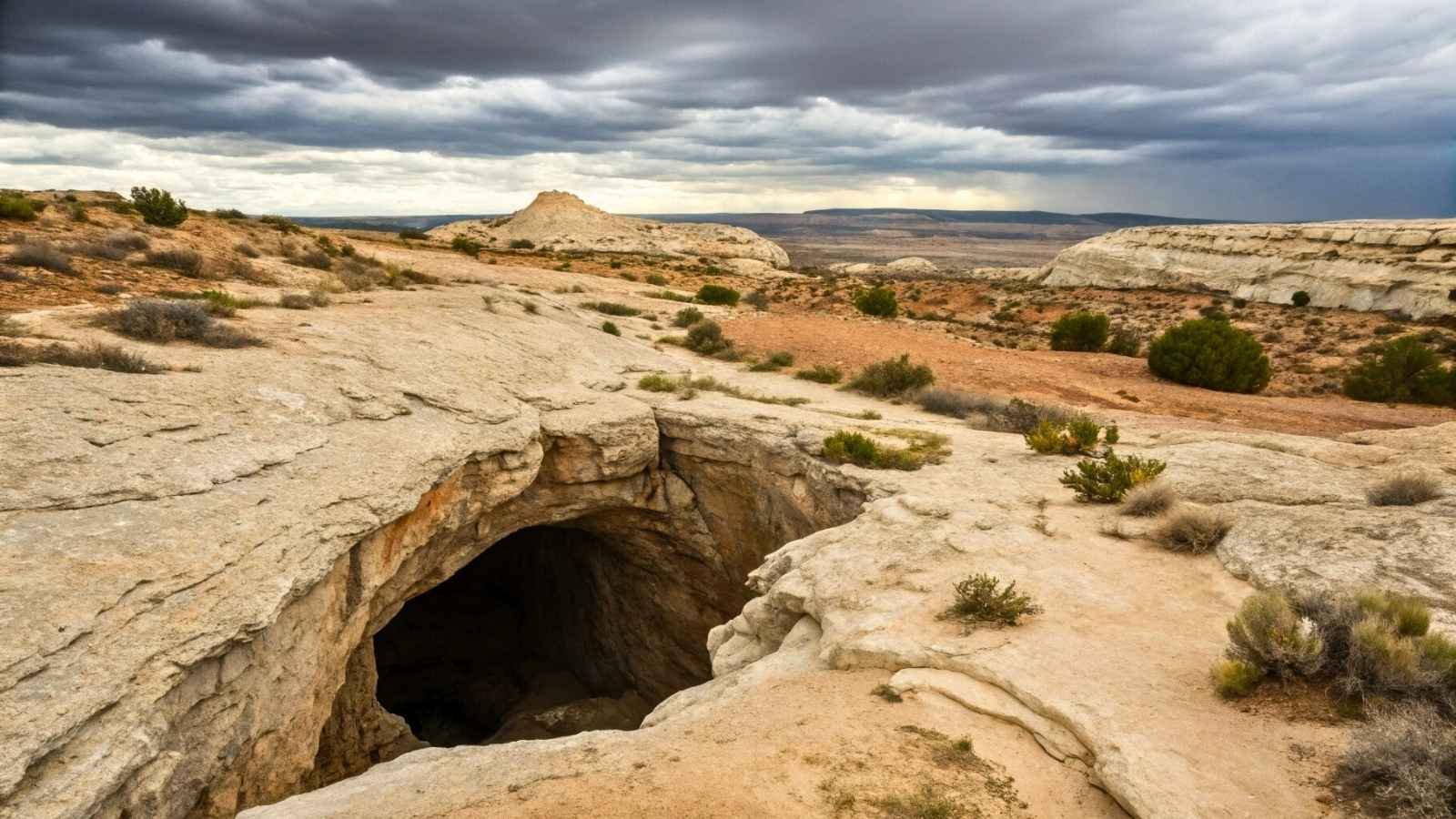
Once a beloved beginner-friendly cave near Utah Lake, Nutty Putty has become known more for its cautionary tale than exploration. While its depth is less than others on this list, the intricate, tight, winding passages dropped steeply and unpredictably, making it feel deeper than it was.
In 2009, a tragic accident during a solo crawl led to the permanent closure of Nutty Putty, sealing it off as both a memorial and a lesson in the risks of caving. Yet it remains part of the conversation, especially in the caving community, where safety protocols are now more rigorously enforced.
Today, Nutty Putty is a powerful reminder: the underground world is majestic, but not to be underestimated. Respect the risks, know your limits, and never cave alone.
Useful Info:
- Status: Permanently closed since 2009
- Location: West of Utah Lake, Utah
- Depth: ~145 feet with extremely narrow vertical crawls
- Legacy: Highlighted in documentaries and safety education for cavers
10. Blanchard Springs Caverns – Arkansas

Ending the list on a more accessible note, Blanchard Springs Caverns is the perfect example of depth you can walk through—no ropes required. Located in the Ozark-St. Francis National Forest, the caverns dip to about 350 feet underground, offering massive cathedral rooms, underground rivers, and guided tours that take you through living caves still forming.
The beauty here is in the scale and elegance. Massive flowstones, towering columns, and crystal-clear pools are all lit just enough to give you a sense of depth while preserving the cave’s mystique. Plus, it’s family-friendly, educational, and remarkably well-preserved.
For many, Blanchard Springs is their first real taste of the underground—and it often sparks a lifelong curiosity for what else lies below.
Useful Info:
- Best Time to Visit: Year-round – climate-controlled interior
- Tour Options: Dripstone Trail (easy), Discovery Trail (moderate), Wild Cave Tour (advanced)
- Temperature Inside: ~58°F – dress accordingly
- Nearby Activities: Hiking trails, campgrounds, and the beautiful Mirror Lake






